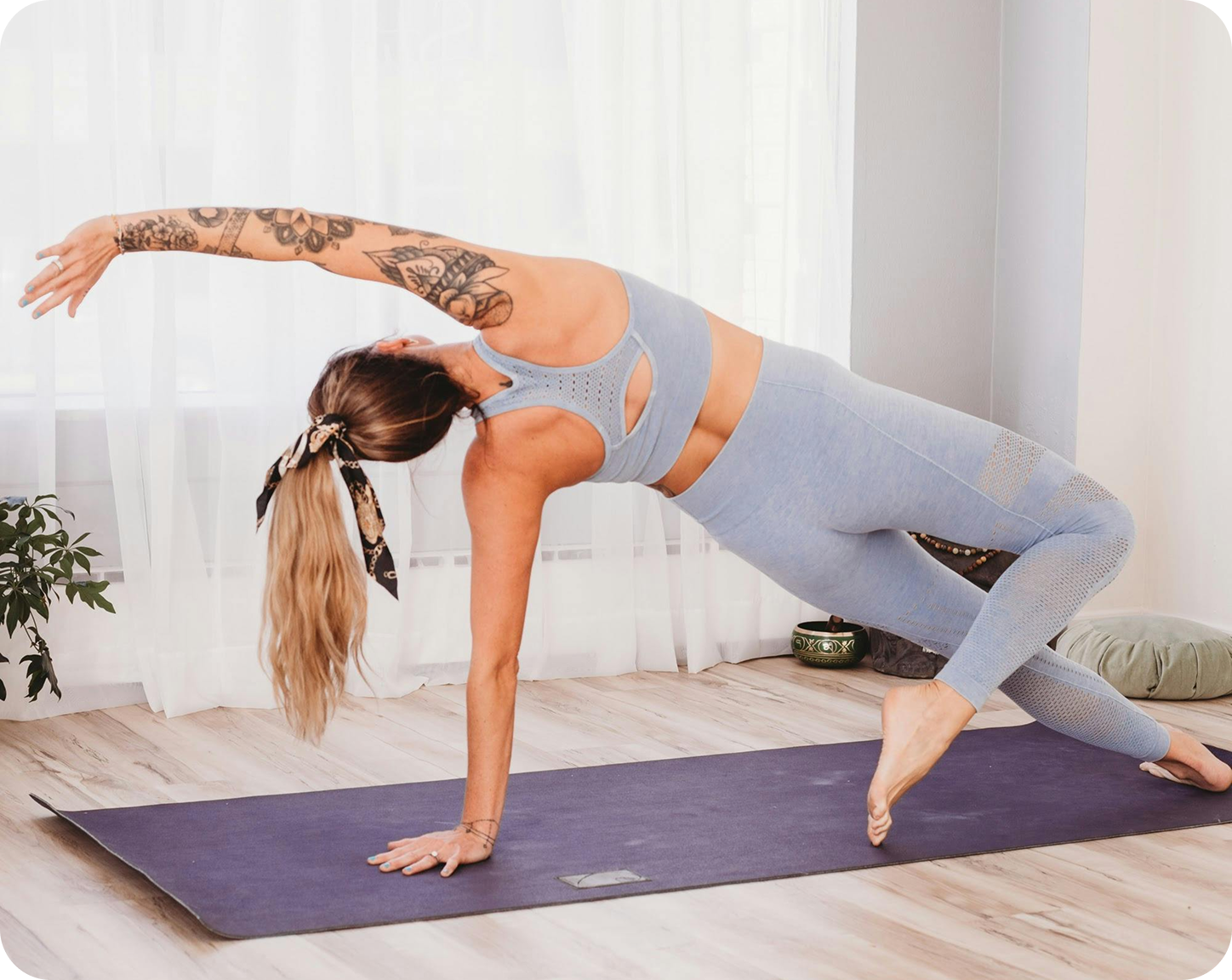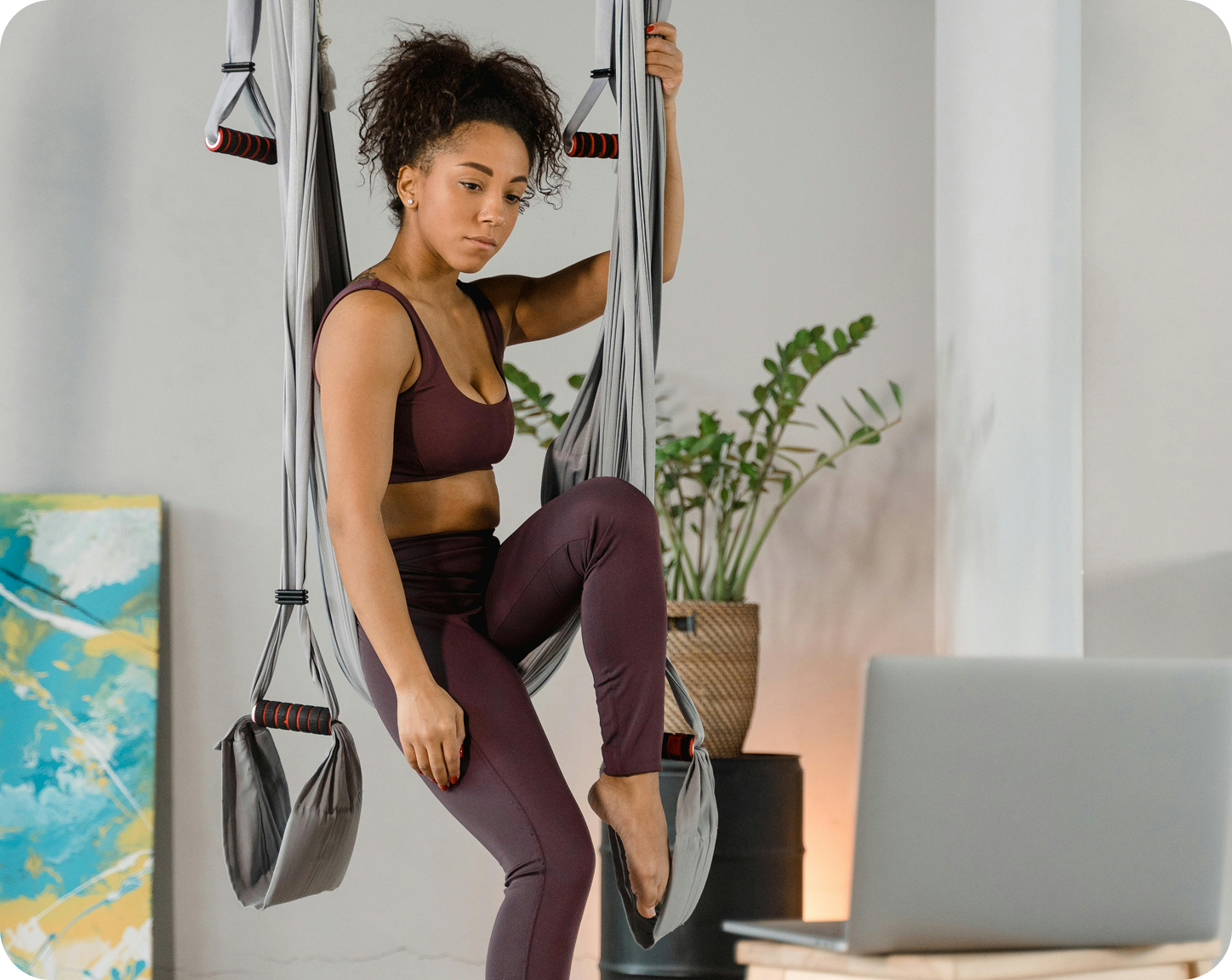A new way of doing fitness
Are you a studio owner or teacher eager to expand your impact beyond your physical space? Starting a YouTube channel is a powerful way to share your expertise, attract new students, and build a global community that resonates with your teachings.
This guide will walk you through the main 5 steps to set up your Yoga YouTube channel and reach a wider audience.
Ready? light, camera, action!
Step 1. Set Up Your Yoga YouTube Channel
Create Your Channel
Start by signing into your Google account. Go to YouTube and create a new channel that reflects your brand as a teacher or studio.
Now fill all the basic information required, such as:
- Channel name: Clear, brand-consistent, and searchable. For example, if your studio is called Lotus Flow Yoga Milano, your channel could be Lotus Flow Online or Yoga with [Your Name] to remain recognisable to your students.
- Channel description: Who you are, what style you teach, and what students will gain from subscribing. Start with the most important sentence because YouTube shows only the first 2-3 lines.
For example:
“I’m Hanna, founder of Lotus Flow Yoga Studio. On this channel, you will find Vinyasa flows, mobility workouts and mindfulness practices. If you want to connect with yourself and embrace the yoga lifestyle, let’s get started”
Pro Tip: Add relevant keywords (mindfulness, yoga for beginners, yoga for flexibility) to increase your reach and be easier to find by visitors.
Design Your Branding
Logo
Use your existing studio logo if you already have strong brand recognition. If not, design a logo that reflects your channel’s name and philosophy.
Profile Picture and Banner
- Profile picture: Your logo or a professional picture of yourself and your team
- Banner: A high-quality image showcasing you teaching in your studio, with text stating your upload schedule (e.g. “New classes every Monday & Thursday”).
Color Palette and Visual Style
Keep colors, fonts, and imagery cohesive across your channel to reflect your studio aesthetic and style. For example, earthy tones for Hatha or neutral minimal palettes for Yin or Mindfulness-based channels, whereas brighter and stronger colors such as red, black and yellow fit more for fitness and high-intensity workouts.
Step 2. Define Your Content Style and Tone of Voice
Identify Your Unique Teaching Style and video formats
Your content style and tone set you apart from the thousands of fitness channels online. Reflect on your unique teaching approach:
- What style will you focus on (e.g. Vinyasa, Yin, HIIT Yoga Fusion)?
- What is your teaching tone of voice (motivational, nurturing, calming, strong)?
- How do you want students to feel after each class (energised, grounded, empowered)?
Once you define this, you can plan content that aligns with your brand identity and target audience. On this matter, rather than posting random classes, think about which video formats you want to produce.
Examples include:
- Full-length live class recordings from your studio
- Short tutorials breaking down complex postures (e.g. “Crow Pose in 5 Minutes”)
- Themed playlists (e.g. Morning Mobility, 30-Day Yoga Challenge)
- ASMR spoken meditations
- Flows with music or silent flows
- Partner yoga or teaching with another instructor
Try to find a balance between following the most popular styles and workouts while still filling the gap gap and answer the needs of your customers. This not only attracts viewers but builds your reputation as a thoughtful, student-focused teacher.
Step 3. Prepare Your Filming Space and Equipment
Dedicated Filming Space
Creating a professional yet authentic filming space is essential. Choose a quiet, bright corner in which you have enough space to perform and feel comfortable. To attract the attention while keep a consistent branding, choose few decorative elements that resonate with your style (like plants, equipments or a print of your logo) without them being intrusive and distract the viewer.
Essential equipment
Remember: a simple setup with excellent sound quality will always outperform cinematic visuals with echoey audio or distractions. Therefore, to ensure a high-quality result, without spending a fortune, focus on clear audio and visuals by using:
- Camera or smartphone with HD video capability
- Tripod for stable filming angles
- Microphone (e.g. clip-on lavalier mic) for clear audio, especially in spoken tutorials
- Lighting: Natural light near windows or softbox lights if filming in darker spaces
Step 4. Edit and Publish Your Videos Professionally
Once you’ve filmed your class or tutorial, the editing phase transforms it into a polished, viewer-friendly experience.
Start by trimming any unnecessary parts at the beginning or end, such as setup time or walking towards the camera. Aim for a clean opening with a warm greeting to engage viewers immediately. Then, to reinforce your brand identity, add an intro and outro screens with your channel name, class title, and a call to action (”Follow for more”, “See you next week for an another workout” or “Like and don’t forget to subscribe!”). Last but not least, consider inserting background royalty-free music at a low volume, especially during silent flows or meditation videos, to create an immersive and calming atmosphere or something morenergetic to keep the view motivated.
Recommended Editing Tools
You don’t need advanced editing skills to begin. Tools like:
- iMovie (Mac) or Windows Video Editor are perfect (and free) for basic trims, text overlays, and transitions
- Canva Video or CapCut are mobile-friendly and have easy templates to use
- Final Cut Pro or Adobe Premiere Pro for advanced editing, colour grading, and audio enhancements once your channel grows
Last steps before publishing
Before uploading, write a clear title, detailed description with relevant keywords, and select an attractive thumbnail showing you in a strong posture or inviting smile to maximise clicks.
Finally, add your video to an existing playlist if relevant, to increase watch time and keep viewers exploring your channel.

Step 5. Build Community and Revenue
Understand Your Audience’s Needs
Consistency is essential for growing your YouTube channel and building trust with your viewers. Decide how many videos per week you can realistically publish and stick to a clear schedule, such as every Wednesday and Sunday. Alongside consistency, take time to understand your audience’s needs. Ask yourself:
- What are they struggling with right now?
- What classes or tutorials will maximise their satisfaction?
- How can my videos support their fitness journey?
The more aligned your content is with their goals, the more engaged and loyal your students will become.
Building a thriving YouTube community goes beyond simply uploading content. Make it a priority to reply to every comment, whether it’s a simple thank you or a deeper discussion about a posture or technique. Ask questions in your videos and captions to invite dialogue, such as:
“Would you like a calming Yin flow or a powerful core sequence next week? Let me know in the comments.”
These interactions boost your engagement signals for YouTube’s algorithm while showing your students that their voices matter, encouraging long-term loyalty and authentic connection.
Promote Your Content Across All Platforms
Don’t rely solely on YouTube to promote your videos. Share them across your other platforms to maximise reach and attract new students to your channel. Post snippets or teaser clips on Instagram Stories and Reels with direct YouTube links, share them in Facebook groups dedicated to yoga or wellness, and embed them in your studio’s newsletter to engage your existing community. Cross-platform promotion ensures that your content reaches people wherever they are already active online.
Expand Your Offering with Integrated Platforms
To streamline your video strategy and maximise revenue, consider using integrated platforms to expand your offerings. For example, bsport, an all-in-one management solution for boutique studios, integrates seamlessly with YouTube. This allows you to embed your videos directly onto your studio website, manage on-demand content libraries efficiently, and monetise your classes by offering them as paid content or membership-exclusive resources. Leveraging such integrations enhances your professional potential with minimal technical setup, ensuring your online classes not only reach more people but also generate sustainable income for your business.
For a deeper dive into how live streaming and VOD can elevate your business, explore this article on boosting your business online through live streaming and VOD.
Conclusion: Start Your YouTube Journey Today!
Starting a Yoga YouTube channel as a studio owner or teacher is not just about gaining followers but creating a space where your teachings can inspire students worldwide.
Stay aligned with your mission, keep learning from analytics and feedback, and your channel will become a sanctuary of wellness, growth, and authentic connection.

